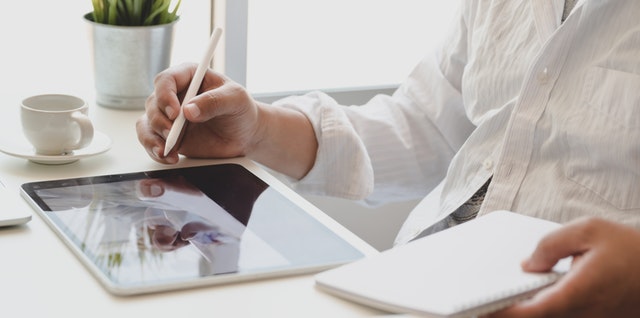From iWax to Digital Image Notes

Tablets and Smartphones have become the favorite computing devices for both private and business uses. With their advanced graphics capabilities, simple user interface and abundance of applications for drawing or taking notes, we are getting closer to being able to use a tablet as a paper replacement. But is it necessary to replace paper, after all? When much of the centennial generation has only known IT as a means of data collection and as the paperless trend continues to grow in the workplace, it is convenient to know the origins of these devices to appreciate how far we have come.
A brief historical tour shows us that the appearance of writing is closely linked to the supporting media. Hence, the mud tablets of Mesopotamia, being low cost and long-lasting, facilitated the transmission of culture, but at the same time demanded brevity in texts due to its limited storage capacity. These gave way to the wax tablets (iWax) common in the Greco-Roman world. Vegetable fiber as a means to capture information eventually achieved dominance in the form of papyrus or paper scrolls vs other materials like leather or parchment. Despite being more delicate paper was cheaper to produce and also lighter, becoming the preferred medium for centuries. Even today there is a rebirth of calligraphy as an art form, along with the availability of special and personalized papers, and many people still prefer to take paper notes even if they use computers or Smartphones for other tasks.
Each profession developed standards for taking notes on paper, with specific symbols and nomenclature to achieve the highest possible accuracy in a short time. In addition, each professional has a personal style and way of registering work. For example, a doctor makes notes on an x-ray and a stylist takes pictures of clients´ haircuts, so it is difficult to replace the versatility of physical/printed media. That is why the progress of note-taking applications is so valuable, especially when they combine the best of both worlds.
The next frontier in technology for note-taking requires combining current innovations: ubiquity in access, multimedia capacity and the natural ease of handwritten notation. That is why business applications in the cloud must include image editors with the features above. A notable example that shows the way forward is Opustime the cloud-based client manager and appointment scheduler that, in addition to putting the professional’s time in the center to reduce canceled appointments, increase turnover, improve customer service and reduce administrative overhead, offers the most friendly, powerful and simple note-taking interface on the market. Opustime allows you to easily create sections and questionnaires in the notes, add images, reuse templates, erase, draw and create new images. As if that were not enough, the resulting image can be sent by email to the customer with the click of a button. For example, a chiropractor could send the patient a copy of an illustration with his treatment and exercises for the week during the appointment, which can also mean sending f.e. a personalized diet, a photo of a tattoo or a hairstyle during or right at the end of an appointment. The only limit is your imagination.
Manage your business from anywhere and free up time for what really matters with OpusTime. Sign up for a 30-day free trial and experience symphony at work!








